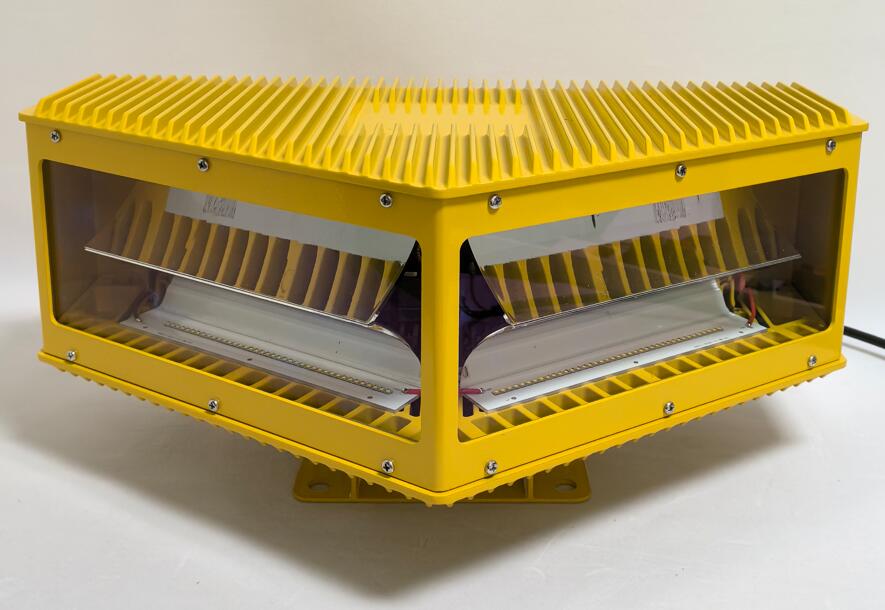Obstacle Lights Aviation: Ensuring Safe Skies with Advanced Warning Systems
In aviation safety, obstacle lights aviation systems play a critical role in preventing collisions between aircraft and tall structures. These lights mark obstacles such as towers, buildings, cranes, and wind turbines, ensuring they are visible to pilots during both day and night operations. With increasing urbanization and the rise of renewable energy infrastructure, the demand for reliable obstacle lights aviation solutions has never been higher. This article explores their importance, types, regulatory standards, and technological advancements.
The Importance of Obstacle Lights in Aviation
1. Preventing Mid-Air Collisions
Aircraft, especially during takeoff, landing, and low-altitude flights, rely on obstacle lights aviation to detect potential hazards. Without proper lighting, structures could pose severe risks, particularly in poor visibility conditions.
2. Compliance with International Standards
Regulatory bodies like the ICAO (International Civil Aviation Organization) and FAA (Federal Aviation Administration) mandate the use of obstacle lights aviation on structures exceeding certain heights. Compliance ensures uniformity and enhances global aviation safety.

3. Enhancing Navigation in Low-Visibility Conditions
Fog, rain, and darkness reduce visibility for pilots. High-intensity obstacle lights aviation systems provide crucial visual cues, helping pilots navigate safely around obstacles.
Types of Obstacle Lights in Aviation
1. Low-Intensity Obstacle Lights
Used for structures below 45 meters (148 feet), these lights are typically steady-burning red lights. They are common on buildings and small towers in urban areas.
| obstacle lights aviation |
2. Medium-Intensity Obstacle Lights
For structures between 45–150 meters (148–492 feet), medium-intensity lights are required. They can be either flashing white or steady red, depending on location and regulations.
3. High-Intensity Obstacle Lights (HIOLs)
Essential for structures taller than 150 meters (492 feet), HIOLs emit powerful white flashes visible from long distances. They are often used on skyscrapers, telecommunication towers, and wind farms.
4. Dual Lighting Systems
Some structures use a combination of red steady lights and white strobes to maximize visibility under different weather conditions.
Regulatory Standards for Obstacle Lights Aviation
1. ICAO Annex 14
The International Civil Aviation Organization (ICAO) sets global guidelines for obstacle lights aviation, including placement, intensity, and color requirements.
| obstacle light aviation |
2. FAA AC 70/7460-1L
The Federal Aviation Administration (FAA) provides detailed specifications for obstacle lighting in the U.S., ensuring compatibility with pilot training and navigation systems.
3. European Aviation Safety Agency (EASA) Standards
EASA enforces similar regulations in Europe, ensuring that obstacle lighting meets regional aviation safety needs.
Technological Advancements in Obstacle Lights Aviation
1. LED Technology
Modern obstacle lights aviation systems use LEDs, which are energy-efficient, long-lasting, and provide superior brightness compared to traditional incandescent bulbs.
2. Solar-Powered Solutions
Solar-powered obstacle lights reduce dependency on grid electricity, making them ideal for remote and off-grid structures.
3. Smart Monitoring Systems
Advanced obstacle lights aviation systems now feature remote monitoring, allowing operators to check performance, detect faults, and schedule maintenance efficiently.
4. Adaptive Lighting Systems
Some newer models adjust brightness based on ambient light conditions, improving visibility while conserving energy.
Challenges and Future Trends
1. Light Pollution Concerns
Excessive brightness can contribute to light pollution. Manufacturers are developing obstacle lights aviation with optimized intensity to balance safety and environmental impact.
2. Integration with Drone Safety Systems
With the rise of drones, future obstacle lights aviation may incorporate UAS (Unmanned Aircraft Systems) detection to prevent collisions with unmanned aerial vehicles.
3. AI and Predictive Maintenance
Artificial intelligence could enable predictive maintenance, reducing downtime and ensuring continuous operation of obstacle lighting systems.
Obstacle lights aviation are indispensable for modern air travel, safeguarding aircraft from ground-based hazards. With evolving technologies such as LEDs, solar power, and smart monitoring, these systems are becoming more efficient and reliable. As aviation infrastructure grows, continued innovation in obstacle lights aviation will be crucial to maintaining the highest safety standards in the skies.
